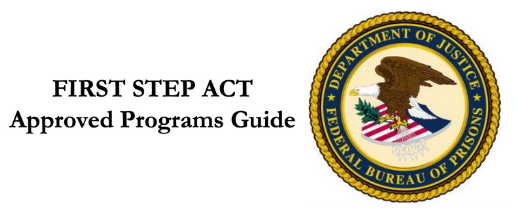Reduction in Recidivism
Requires the Attorney General to develop a risk and needs assessment system
- The BOP assesses the recidivism risk and criminogenic needs of all federal prisoners
- Place them in recidivism-reducing programs
- Including productive activities to address their needs and reduce this risk.
- Under the act, the system provides guidance on the:
- type,
- amount, and
- the intensity of recidivism reduction programming and
- productive activities to which each prisoner is assigned, including
- information on which programs prisoners should participate in based on their criminogenic needs.
- on how to group, to the extent practicable,
- prisoners with similar risk levels together in recidivism reduction programming and
- housing assignments.
- The Act also amends 18 U.S.C. § 4042(a), requiring the BOP to assist inmates in:
- applying for federal and state benefits and
- obtain identification, including a
- social security card,
- driver’s license or
- other official photo identification, and
- birth certificate.
- The First Step Act also expands the Second Chance Act to deliver recidivism reduction programming.
Incentives for Success
- The Act amended 18 U.S.C. § 3624(b), so that federal inmate can earn:
- up to 54 days of good time credit for every year of their imposed sentence
- rather than, for every year of their sentence served.
- For example, if you’re sentenced to 10 years, and your maximum good time credit = 540 days.
- These good-time credits go towards pre-release custody.
- Ineligible for good-time credit are generally categorized as:
- violent, or involve
- terrorism,
- espionage,
- human trafficking,
- sex and sexual exploitation; additionally
- excluded offenses are a repeat felon in possession of a firearm, or
- high-level drug offenses
- For a complete list, see disqualifying offenses
Confinement
- 18 U.S.C. § 3621(b) requires the BOP to house inmates in facilities within 500 driving miles of their primary residence.
- The BOP variety of factors goes into placement, including:
- bed space availability,
- security designation,
- programmatic needs,
- mental and medical health needs,
- any request made by the inmate related to faith-based needs,
- recommendations of the sentencing court, and
- other security concerns.
- The FSA reauthorizes and modifies a pilot program that allows the BOP to place certain elderly and terminally ill prisoners in home confinement to serve the remainder of their sentences.
Correctional Reforms
- Criminal justice-related provisions, including;
- prohibition on the use of restraints on pregnant inmates in the custody of BOP and the U.S. Marshals Service.
- requirement for the BOP to provide tampons and sanitary napkins for free
- The FSA requires BOP to give training to correctional officers and other BOP employees:
- on how to interact and de-escalate encounters with people who are diagnosed with mental illness or other cognitive deficits.
- Also included is a prohibition against the use of solitary confinement for juvenile delinquents in federal custody.
Sentencing Reforms
- Changes to Mandatory Minimums for Certain Drug Offenders for some drug traffickers with prior drug convictions
- the threshold for prior convictions that count toward triggering higher mandatory minimums for repeat offenders,
- is reduced from the 20-year to a 15-year mandatory minimum,
- The life-in-prison mandatory minimum (where there are two or more prior qualifying convictions),
- to a 25-year mandatory minimum.
- the threshold for prior convictions that count toward triggering higher mandatory minimums for repeat offenders,
- Retroactivity of the Fair Sentencing Act (FSA)
- Those who received longer sentences for crack cocaine than if sentenced for possession of powder cocaine can submit a petition in federal court to have their sentences reduced.
- Expanding the Safety Valve
- allows courts to sentence low-level, nonviolent drug offenders with minor criminal histories to less than the required mandatory minimum for an offense.
Violent Offense Codes for PATTERN Risk Assessment *
Cut points used when calculating an inmate’s Risk of Recidivism

